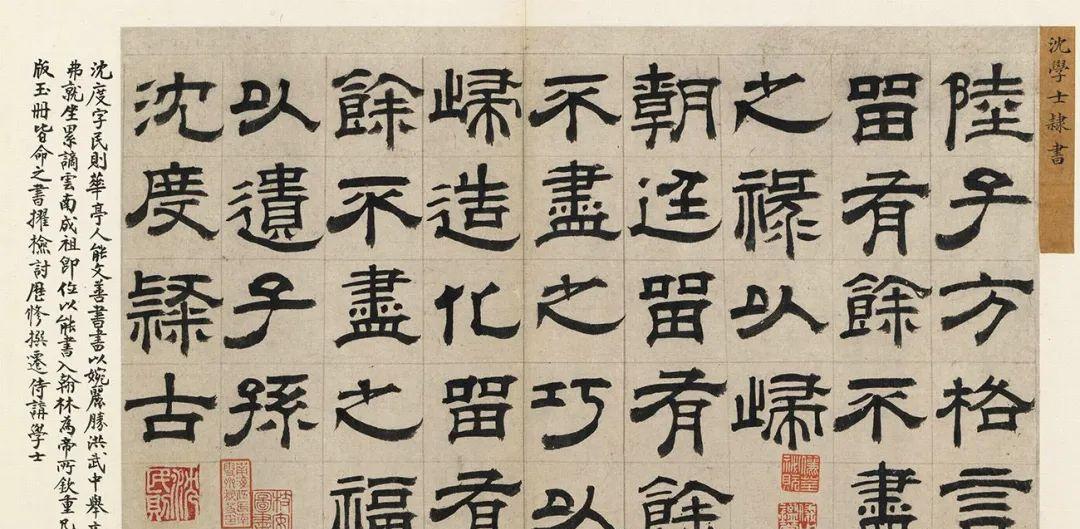Ming Dynasty Shen Du lishu excerpt four left inscription page, Shanghai Museum collection.
Shen Du (1357-1434), also spelled Minze, was a native of Songjiang, Shanghai. Bachelor of Lectures, Bachelor of Hanlin. Good at writing, work seal, subordinate, kai, line. The style of writing is dignified and elegant, especially loved by the Yongle Emperor, known as "I Chao Xizhi", all the edicts and imperial inscriptions, are out of his hands, the history is called "TaiGe Body". Shen Du and Di Yue were also called "Big and Small Second Bachelors" and "Yunjian Ershen", both of whom were important representatives of the "Songjiang Shu School" and had a wide range of influences.

This page excerpts three sentences of the "Four Liu Ming", which are rigorous and calm, the body is flat and dignified, and the style is elegant and elegant.
Ming Yang Shiqi said: Shen Du's calligraphy, with "eight points is particularly ancient, full of Chinese meaning." "